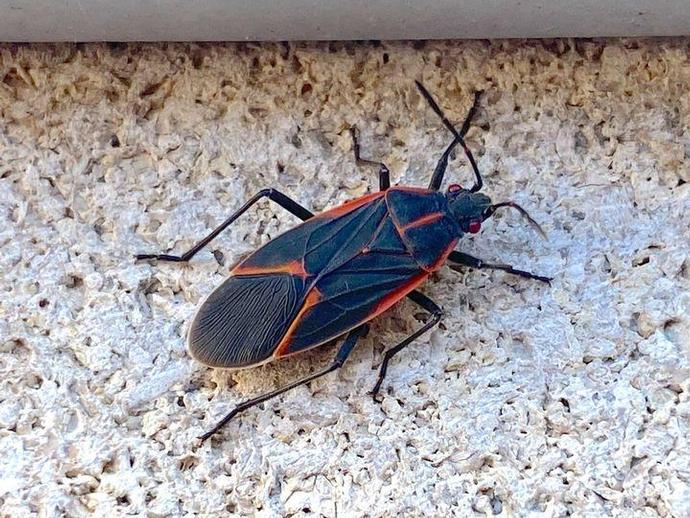November 9, 2021
Ben here with today's edition of #BenInNature presented by our friends at Carter Bank & Trust!
This is the boxelder bug (Boisea trivittata), and if you recognize it, there's a good chance that you're not a big fan. While boxelder bugs are harmless to humans, they can easily become pest insects, particularly in the fall.
As the name suggests, boxelder bugs primarily feed on the developing seeds of boxelder trees, although they'll also feed on maple and ash seeds. In the fall they will also feed on fruit, which can cause dimples and scars. If disturbed, they'll release a foul-smelling, terrible-tasting compound to deter predators. Their black and red coloration is a form of aposematism, which warns predators that boxelder bugs are to be avoided. Because of their coloration and chemical defenses, boxelder bugs will sometimes sun themselves in large groups since they're unlikely to be preyed upon.
The biggest reason folks dislike boxelder bugs is that they have a tendency to invade our homes. When the weather starts turning cold in the fall, boxelder bugs will seek out a good place to overwinter, and they often choose to crawl inside crevices in our homes and become inactive. Once we turn on our heat for the winter, however, the boxelder bugs wake up and enter our homes seeking food and water, and they have a bad tendency to stain fabric with their excretions. If you tend to find a lot of boxelder bugs in your home in the fall and winter, the best defense is to seal up as many cracks and crevices on the exterior of your home as you can find.
ABOUT #BenInNature
Social distancing can be difficult, but it presents a great opportunity to become reacquainted with nature. In this series of posts, Administrator of Science Ben Williams ventures outdoors to record a snapshot of the unique sights that can be found in the natural world. New updates are posted Monday - Friday, with previous posts highlighted on the weekends. This series of posts is made possible thanks to the support of VMNH Corporate Partner Carter Bank & Trust (www.cbtcares.com).
NATURE PHOTO IDENTIFICATIONS
If you discover something in nature that you would like help identifying, be sure to message us right here on Facebook with a picture (please include location and date of picture) and we'll have our experts help you identify it!

 Hours & Admissions
Hours & Admissions Directions
Directions

